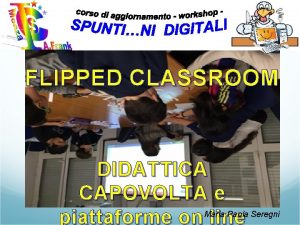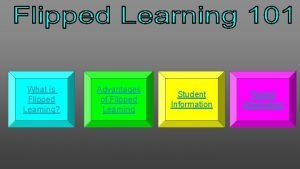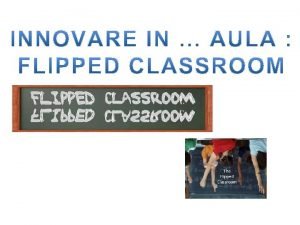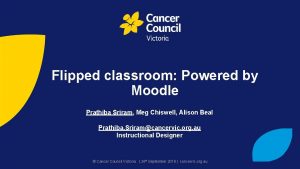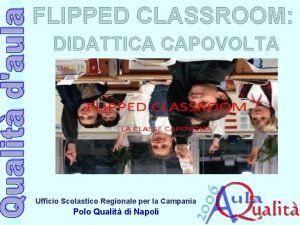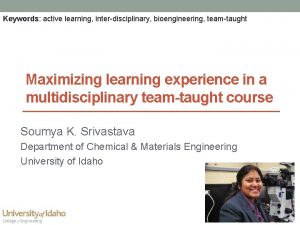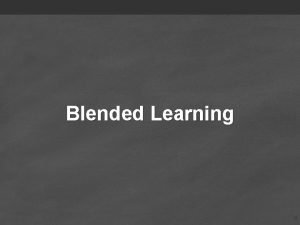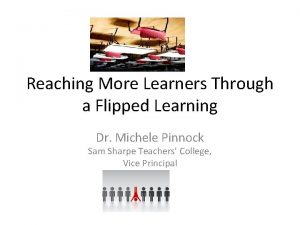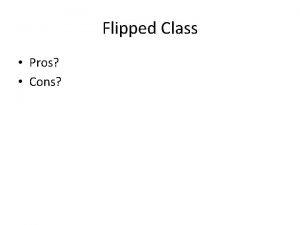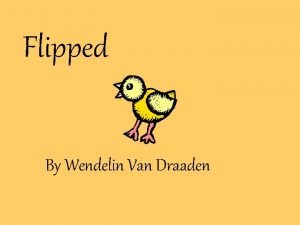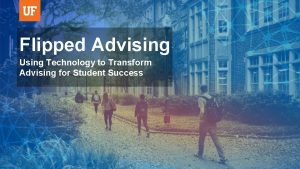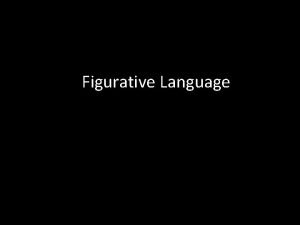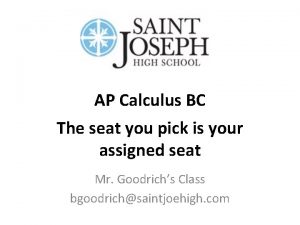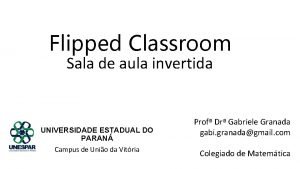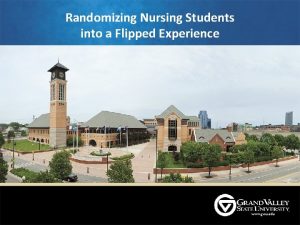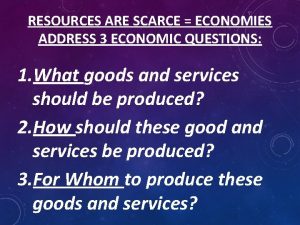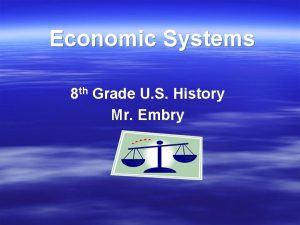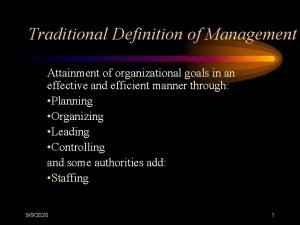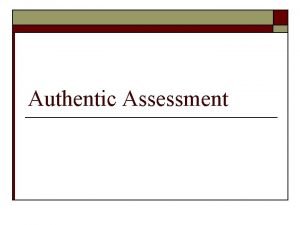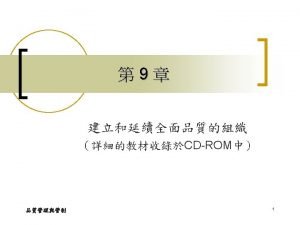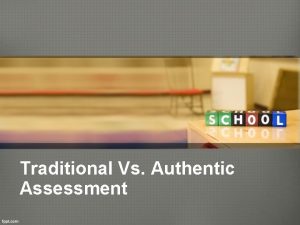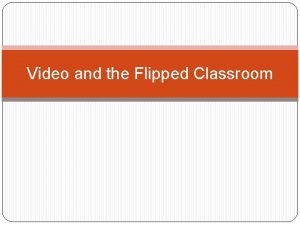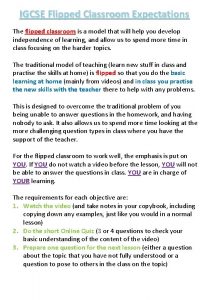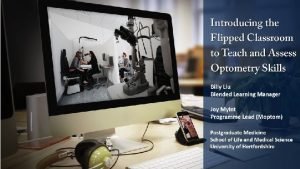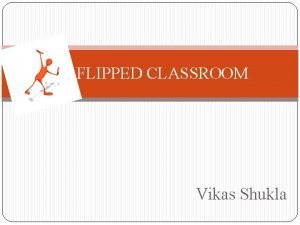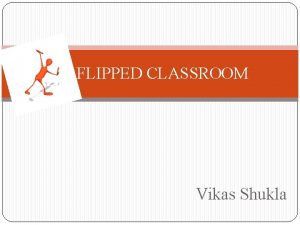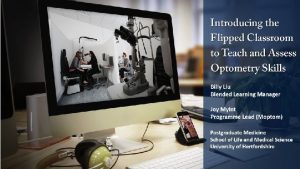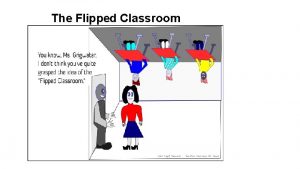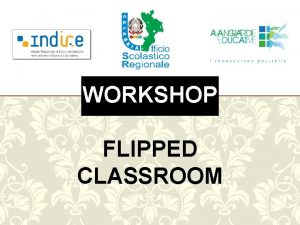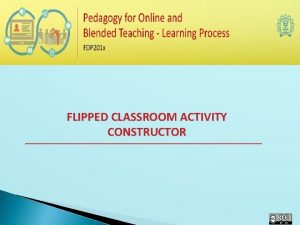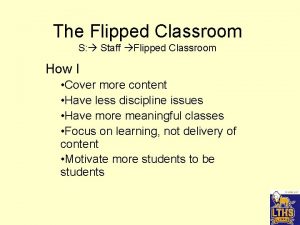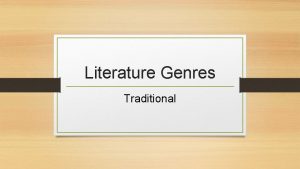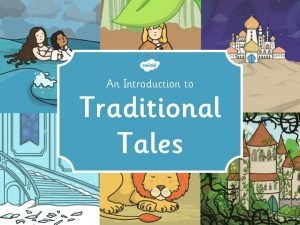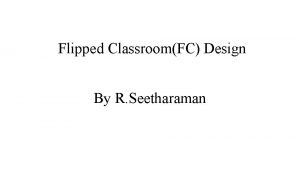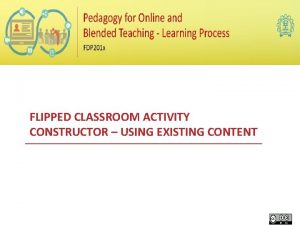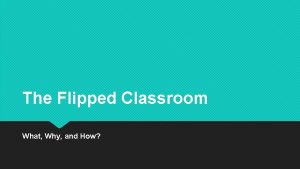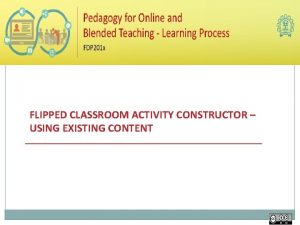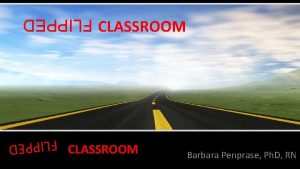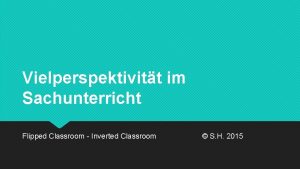Traditional CLASSROOM FLIPPED CLASSROOM Flipped Classroom Definition Flipped
























- Slides: 24

Traditional CLASSROOM FLIPPED CLASSROOM

Flipped Classroom Definition

Flipped Classroom Definition

Flipped Classroom Definition Flipped learning is a pedagogical approach in which the conventional notion of classroom-based learning is inverted spatially and temporally: - Before Class/ At Home: Students are introduced to the learning material before class. - During Class: Students deepen understanding through discussion with peers and problem-solving activities facilitated by teachers.

Before Class During Class After Class

How to Flip a Class?

How to Flip a Class?

How to Flip a Class?

How to Flip a Class?

How to Flip a Class?

How to Flip a Class?

How to Flip a Class?

How to Flip a Class?

Preparatory Pocedure – STEP ONE Step 1: Teacher defines content scope, learning objectives and instructional strategies. - Define the learning objectives and outcomes that align with the activities students will do before, during, and after the class. - Describe the task that will demonstrate that the learning objective has been met. (Will students create a project, solve problems, analyze data, engage in a debate, or design a product to meet the desired learning objectives? - Choose the evidence-based instructional approach will fit the main learning activity. (for example: peer-instruction, team-based learning, Process-Oriented Guided Inquiry Learning).

Preparatory Procedure – STEP TWO Step 2: Students gain familiarity with new material before class • Plan and prepare the new instructional materials that students will engage with prior to class (for example: video, text, animation, simulation, online multimedia module, or other). Ask yourself: • What is the best way to communicate and present the new instructional material? • Will my students be able to process this content in this format effectively?

Preparatory Procedure – STEP THREE Step 3: Activities that motivate students to prepare before class Refer to the learning objectives and tasks that you outlined in step 1. Ask students to: • respond to open-ended questions online about the instructional material before class • prepare questions about the instructional materials • prepare a presentation about the topic • attempt to solve some problems • research examples to bring to class that illustrate a principle

Advantages for Students Learning - Students experience autonomous learning. - Students move from passive learning to active learning where students engage in collaborative activity, peer learning and problem-based learning. - Students have the flexibility to learn at their own pace. - Students as digital citizens are more engaged and motivated to learn in a stress-free environment. - Students can learn at any time: content is always available.

Advantages for Students Communication - Students communicate more with teacher and peers. - Students talk most of the time and much more than the teacher. - Students can enrich their languages whatever the resource original language is. - Interpersonal contact is enhanced.

Advantages for Students Skills - Students become able to manage the overwork load. - The use of technology further enriches the flipped learning process and promotes skills that are essential for 21 st-century learning. - Students construct and apply knowledge while developing higher order thinking skills (critical thinking and communication). - Students become responsible and lead their own learning.

Advantages for Teachers • Teacher is a facilitator and not a lecturer. • Teacher invests effectively the time of the class (more group and project-based activities). • Teacher can adapt differentiated interactive learning. • Teachers can adapt the digital materials to their students’ needs.

Advantages for Teachers • Teachers can archive the content to be used/updated again in other classes. (Digital Library) • Teacher is always learning new things in order to answer challenging questions and lead evidence-based discussions.

Challenges • Preparation is time and effort consuming. • Not all teachers are skillful in technology (how to use, what to use) and/ or not all of them are good in class management. • The process can be difficult to be applicable/ not applicable for all lessons. • Students don’t have access to internet or technology because of parental economic status /control/ mindset.

References • Flipped Classroom Model: Why, How, and Overview https: //www. youtube. com/watch? v=BCIxik. Oq 73 Q • The Flipped Classroom Model: https: //www. youtube. com/watch? v=ojieb. Vw 8 O 0 g • Flipping the classroom -- my journey to the other side: Jenn Williams at TEDx. Rocky. View. Schools. ED: https: //www. youtube. com/watch? v=Y 3 b 9 t. Cm. Um. A 4 • Book: Berthiaume, D. et Dumont, A. (2016) LA PEDAGOGIE INVERSEE. Deboeck Superieur.

… m – o r r f e t s n d e r c a S P Reg O D y a w g u r U r e t n e t c u r S i P O Be D n a w o
 Cse smart class
Cse smart class Paola seregni
Paola seregni Flipped classroom advantages and disadvantages
Flipped classroom advantages and disadvantages I promessi sposi flipped classroom
I promessi sposi flipped classroom Meg moodle
Meg moodle Didattica capovolta
Didattica capovolta Bioengineering active learning
Bioengineering active learning Flipped classroom
Flipped classroom Flipped classroom examples
Flipped classroom examples Flipped classroom pros and cons
Flipped classroom pros and cons Setting of flipped
Setting of flipped Flipped advising
Flipped advising Flipped up their noses like goats
Flipped up their noses like goats Flipped math calculus
Flipped math calculus Flipped sum of its parts
Flipped sum of its parts Classroom
Classroom Flipped
Flipped Traditional economy definition economics
Traditional economy definition economics Traditional economy definition economics
Traditional economy definition economics Traditional management definition
Traditional management definition What is traditional policing
What is traditional policing Definition authentic assessment
Definition authentic assessment Traditional management definition
Traditional management definition Traditional management definition
Traditional management definition Traditional economy definition economics
Traditional economy definition economics

